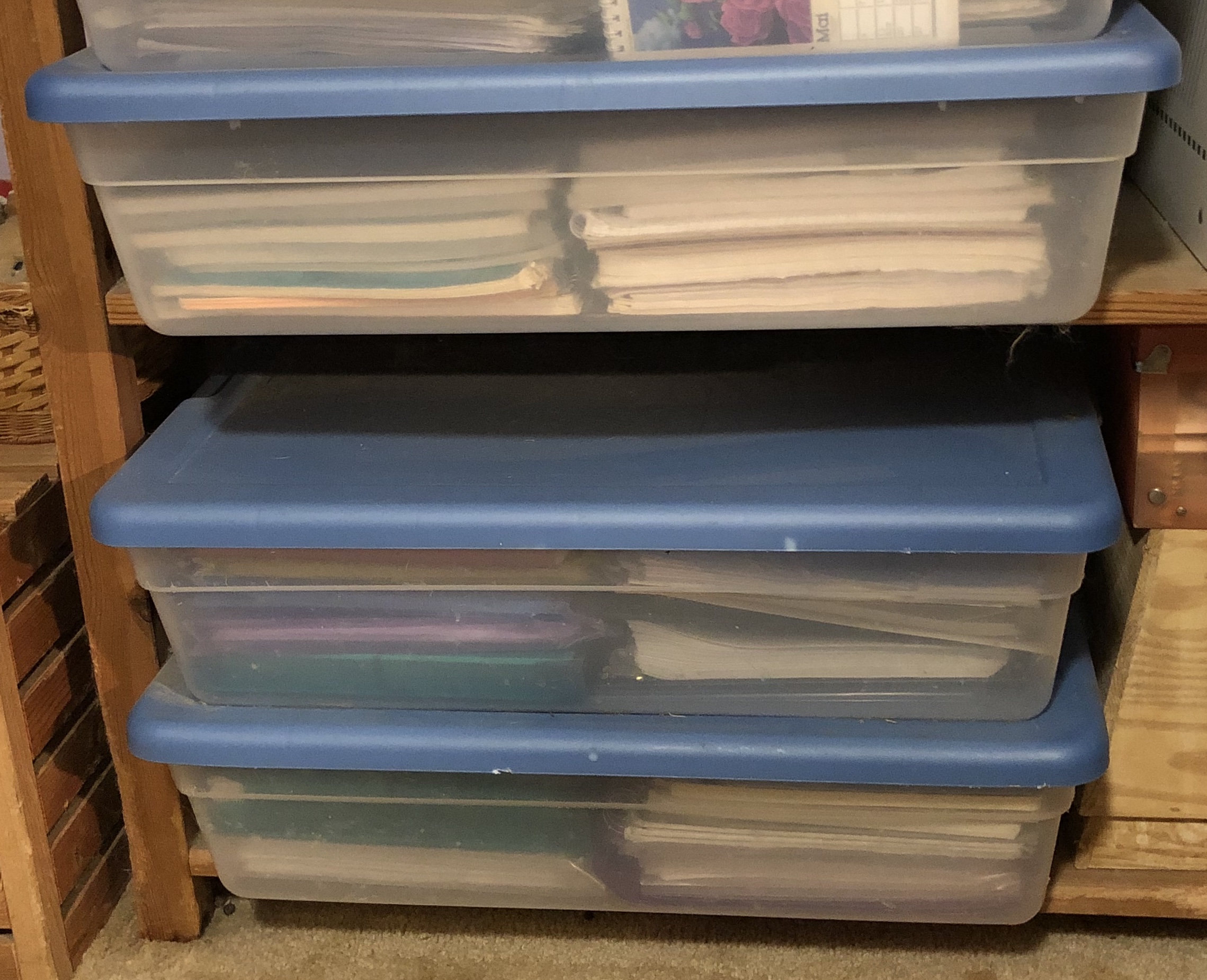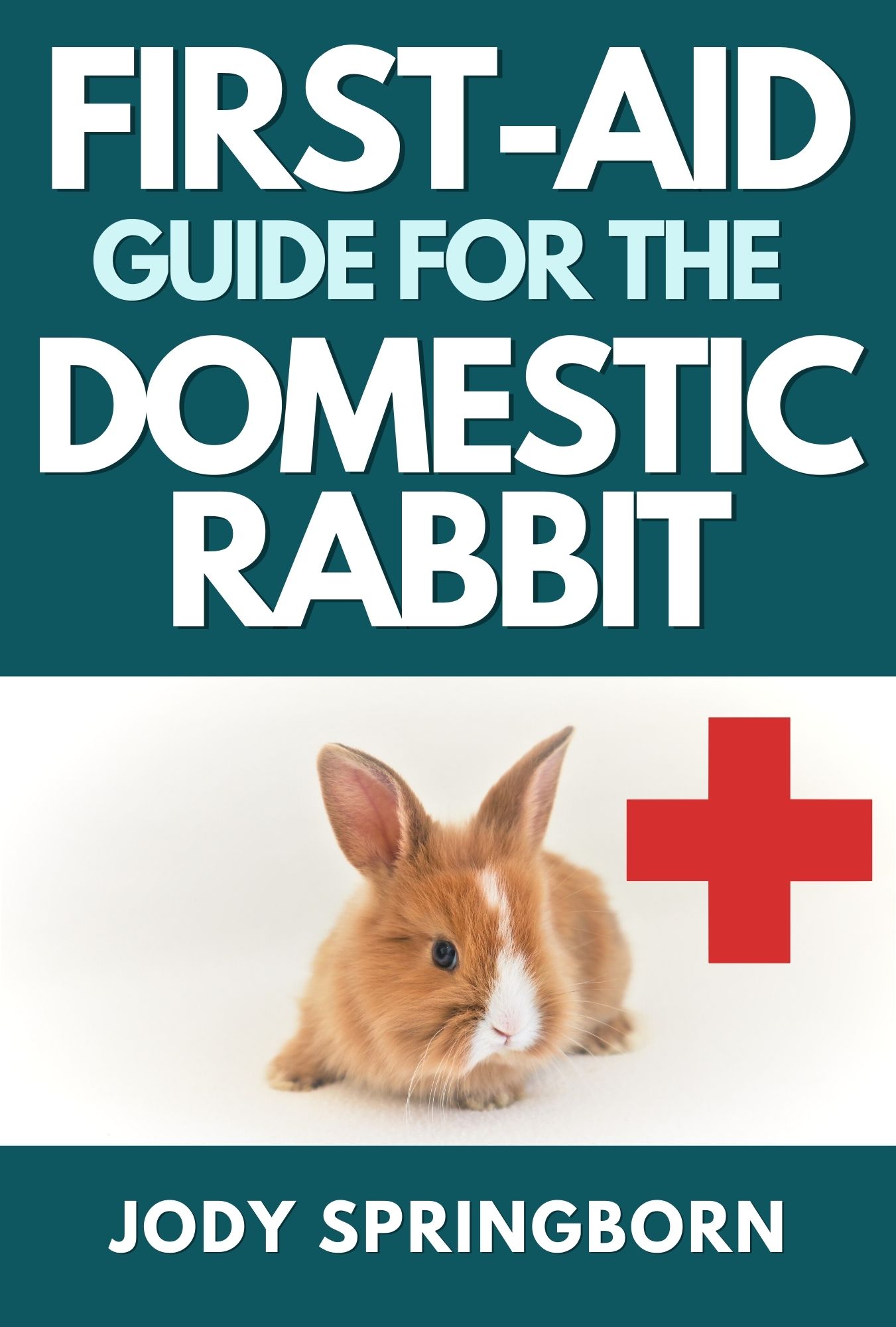- Home
- Rabbit Cages and other terrible ideas
- Bunny Proofing
Bunny-Proofing Your Home
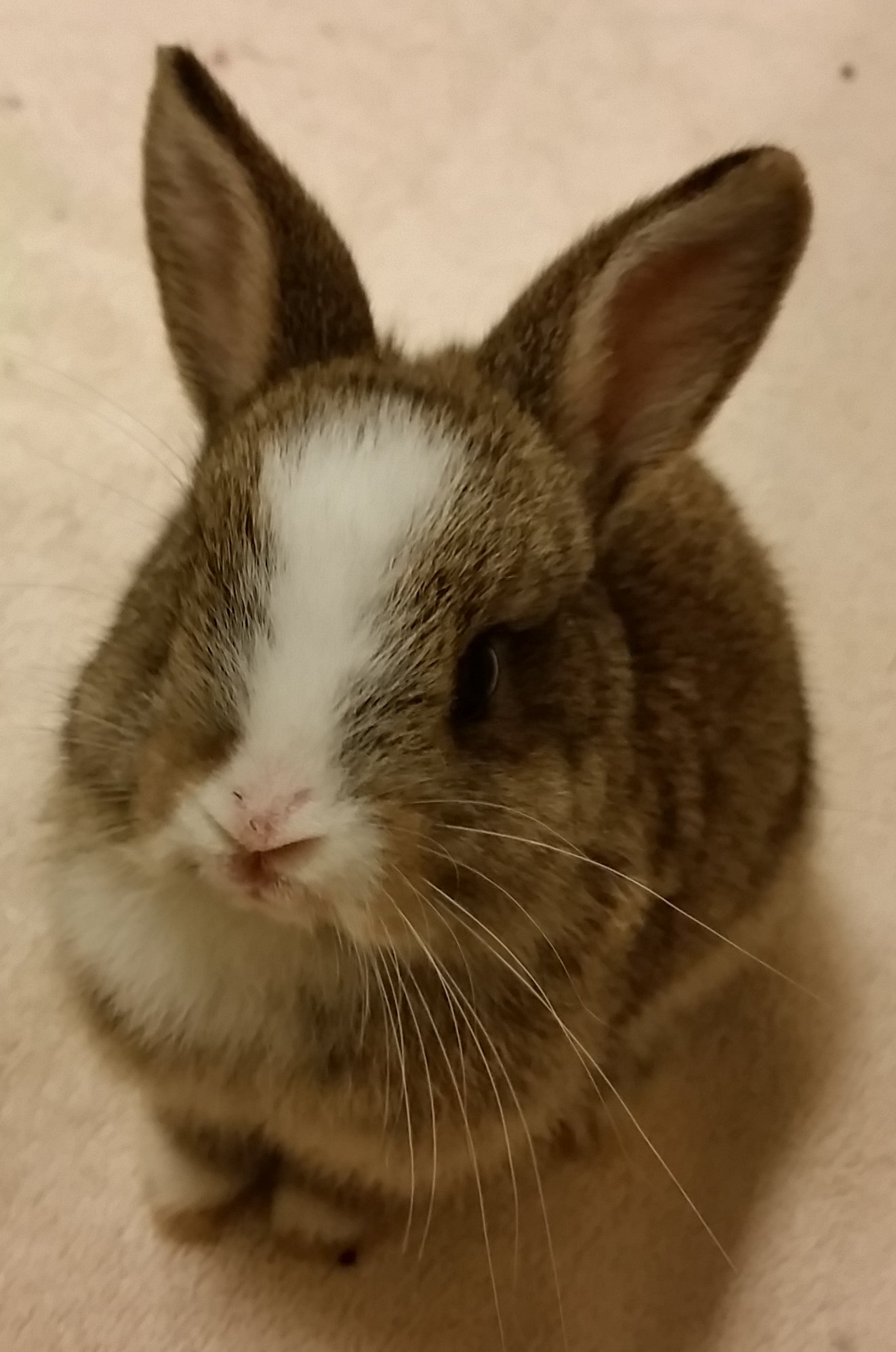 Don't trust this face!
Don't trust this face!He's Going to Destroy Everything!
Bunny-proofing your home is an essential part of bunny ownership. The basic concept of bunny-proofing is covering the object up, putting it behind something or putting it out of reach. The thing to remember is bunnies love to dig and/or chew. They will target anything that is valuable, irreplaceable, expensive to replace or excessively obnoxious to replace. In other words, don’t keep your grandmother’s wedding album on the bottom shelf of your bookshelf or coffee table.
Not all rabbits are the same and not all rabbits like to destroy the same things. You may be lucky enough to adopt a bunny who likes to leave your stuff alone. However, it is best to prepare for the worst. Here is a list of the most common items targeted:
- Cords
- Books, magazines, envelopes, homework (anything paper-based)
- Baseboards and moulding
- Furniture (legs, couch cushions, etc. They will attack rattan, cloth, plastic or leather)
- Bags, clothes and/or shoes
- Remote control buttons
- Carpet
- Towels, blankets, pillows, other pet beds
- Mattresses (including box springs)
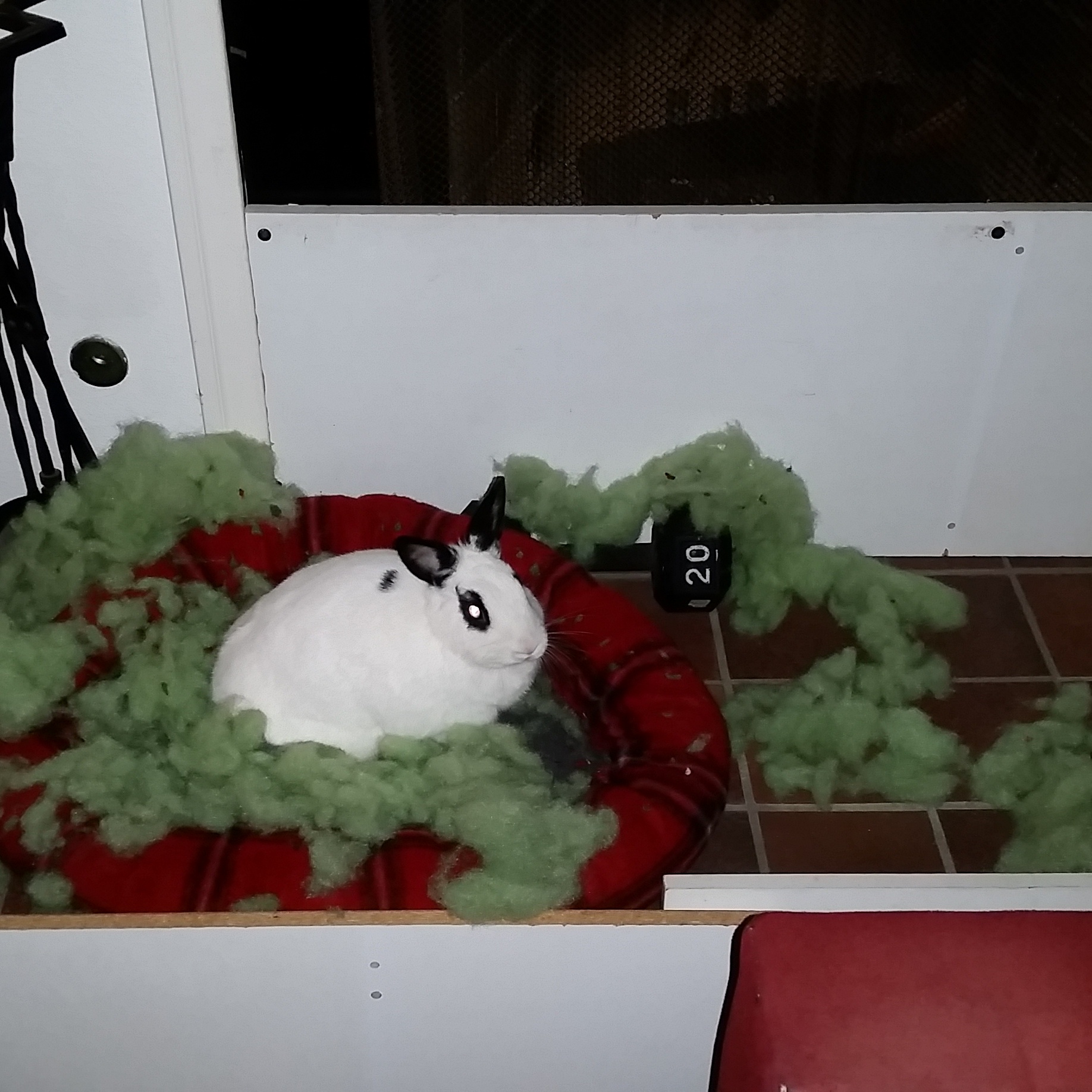 Destroying pet beds is SO MUCH FUN! Thanks, Marsh. Destroying pet beds is SO MUCH FUN! Thanks, Marsh.Photo by John Borucki. |
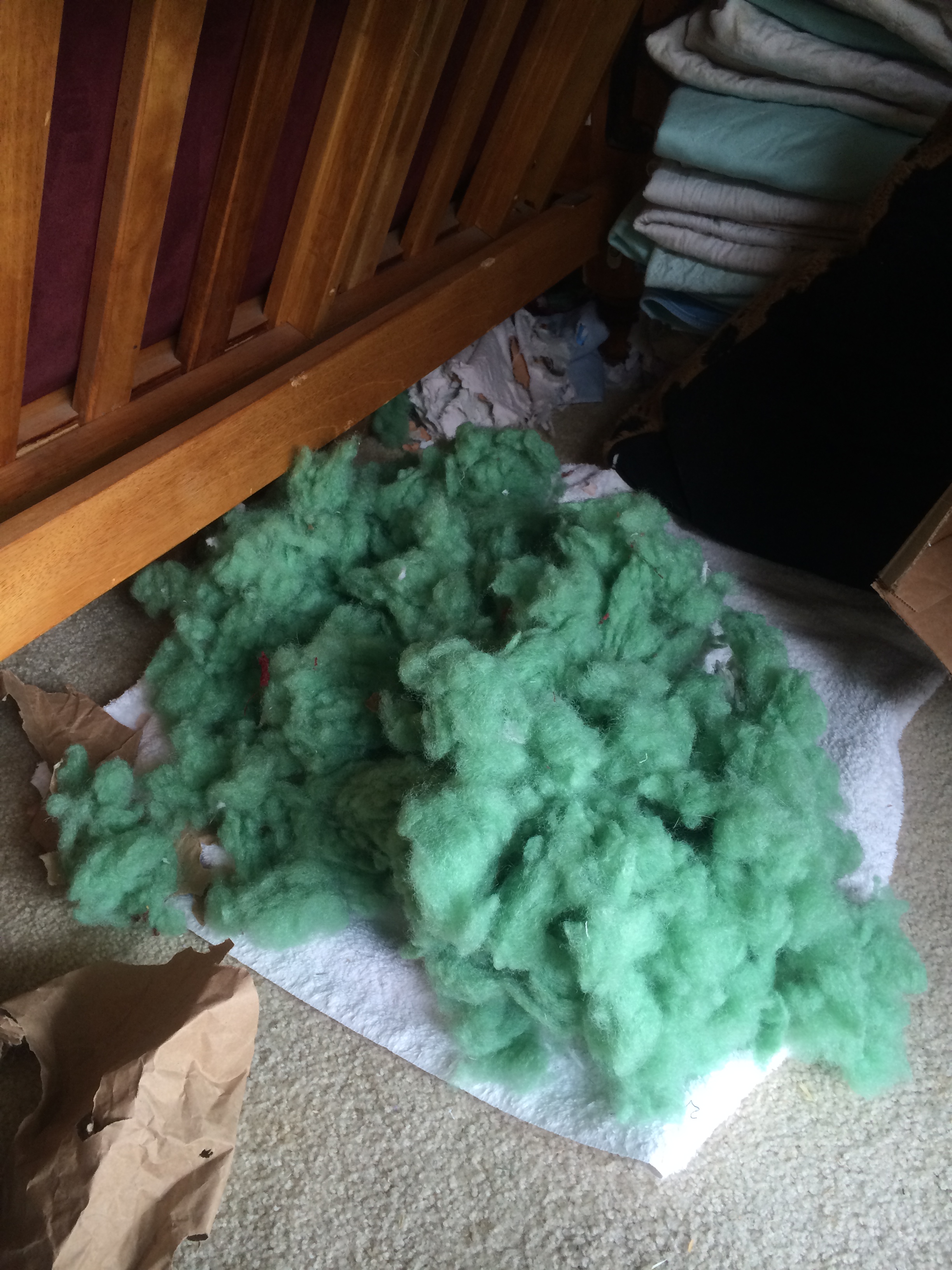 Bye-bye floor pillow (thanks Panda). Bye-bye floor pillow (thanks Panda). |
Digging may also be a problem. Rabbits may dig in a flower pot or they may dig in your couch cushion or carpet. This usually results in large holes in either the floor or couch. They may also like to dig into your mattress and bounce around in your box spring!
Bunny-Proofing Cords
As mentioned before, not all rabbits like to chew the same things (for example, I have not had a rabbit that chews on baseboards - knock on wood), but a universal favorite is cords. Usually, the more expensive the cord, the more likely a bunny will destroy it: smartphones, iPads, speaker cords, charger cords to that old smartphone that shops don’t carry anymore (thanks Zoe). Covering cords is also essential to make sure a bunny can’t get hurt. Biting the cord right through can shock them enough to badly burn or even kill them, so it’s especially important to cover items such as lamp cords, TVs, stoves, fridges, computers, etc.
I like to use spiral wrap, which is a heavy-duty plastic that comes in different widths. The plastic in spiral wrap tends to be more difficult to destroy than most plastic tubing used to protect wires from dogs or cats.
Another very effective wire protector is PVC pipe (the same stuff used for plumbing). You can get different lengths and diameters to suit your needs at your local home improvement store.
 PVC pipe can be found in any hardware store. Also good for storing posters. PVC pipe can be found in any hardware store. Also good for storing posters. |
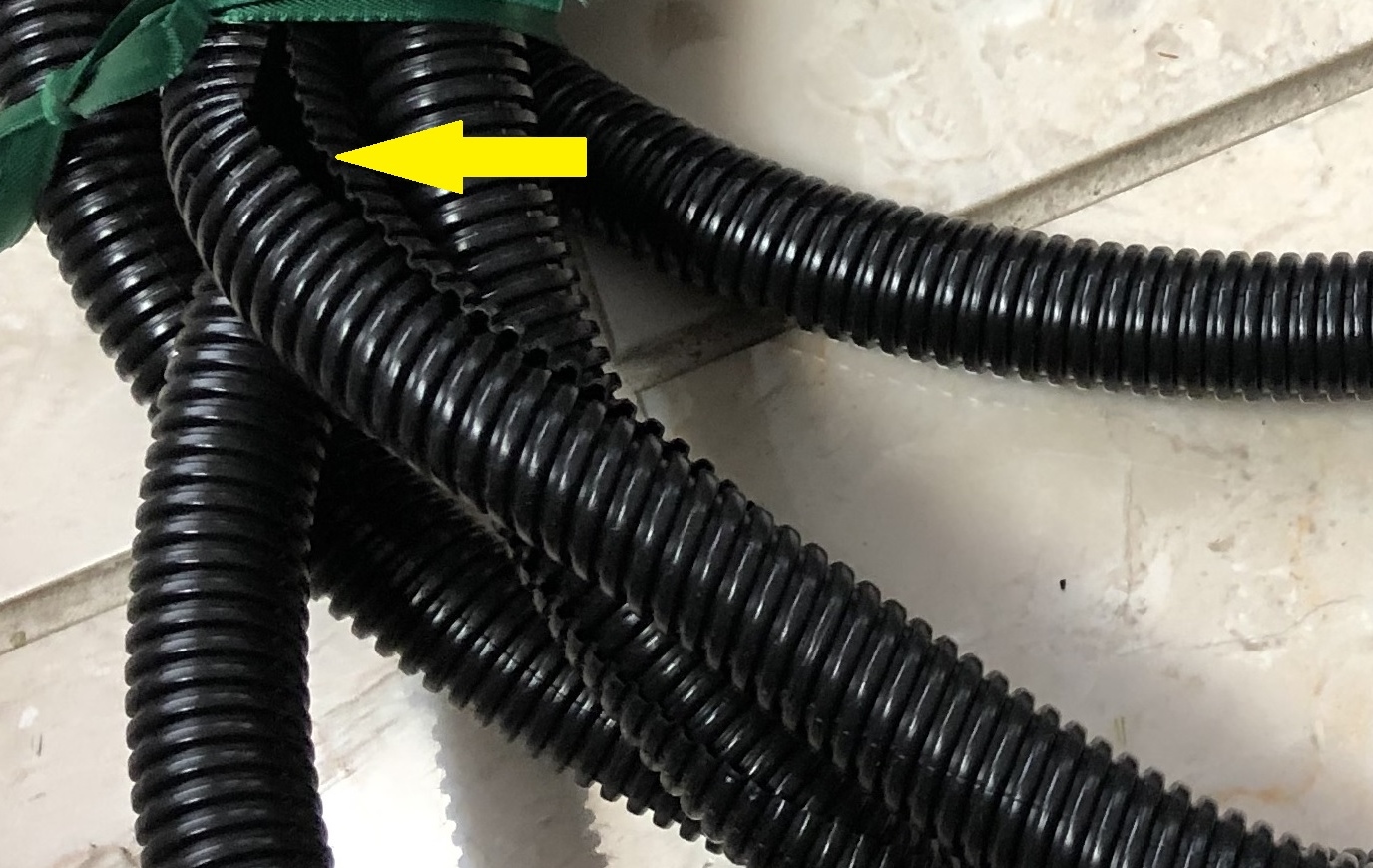 Flexible cord protectors. There is a slit where you slid your cords through (see arrow). Because this is a thin plastic, it is not effective against a determined bunny. Flexible cord protectors. There is a slit where you slid your cords through (see arrow). Because this is a thin plastic, it is not effective against a determined bunny. |
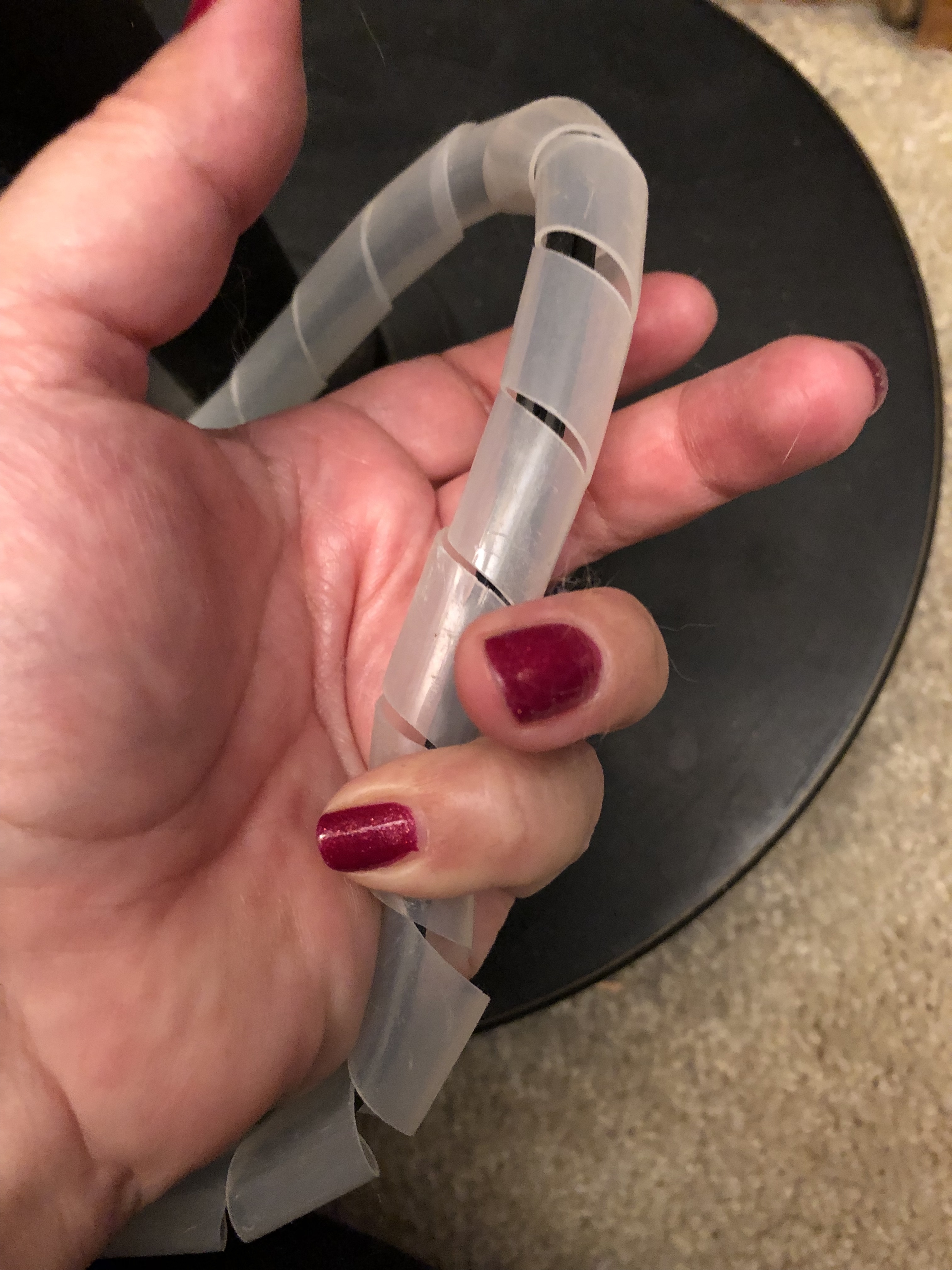 Spiral wrap comes in different lengths and diameters. It is a harder plastic than the more flexible cord protectors and is therefore a better choice. Spiral wrap can be purchased online.
Spiral wrap comes in different lengths and diameters. It is a harder plastic than the more flexible cord protectors and is therefore a better choice. Spiral wrap can be purchased online.Bunny-Proofing the Rest
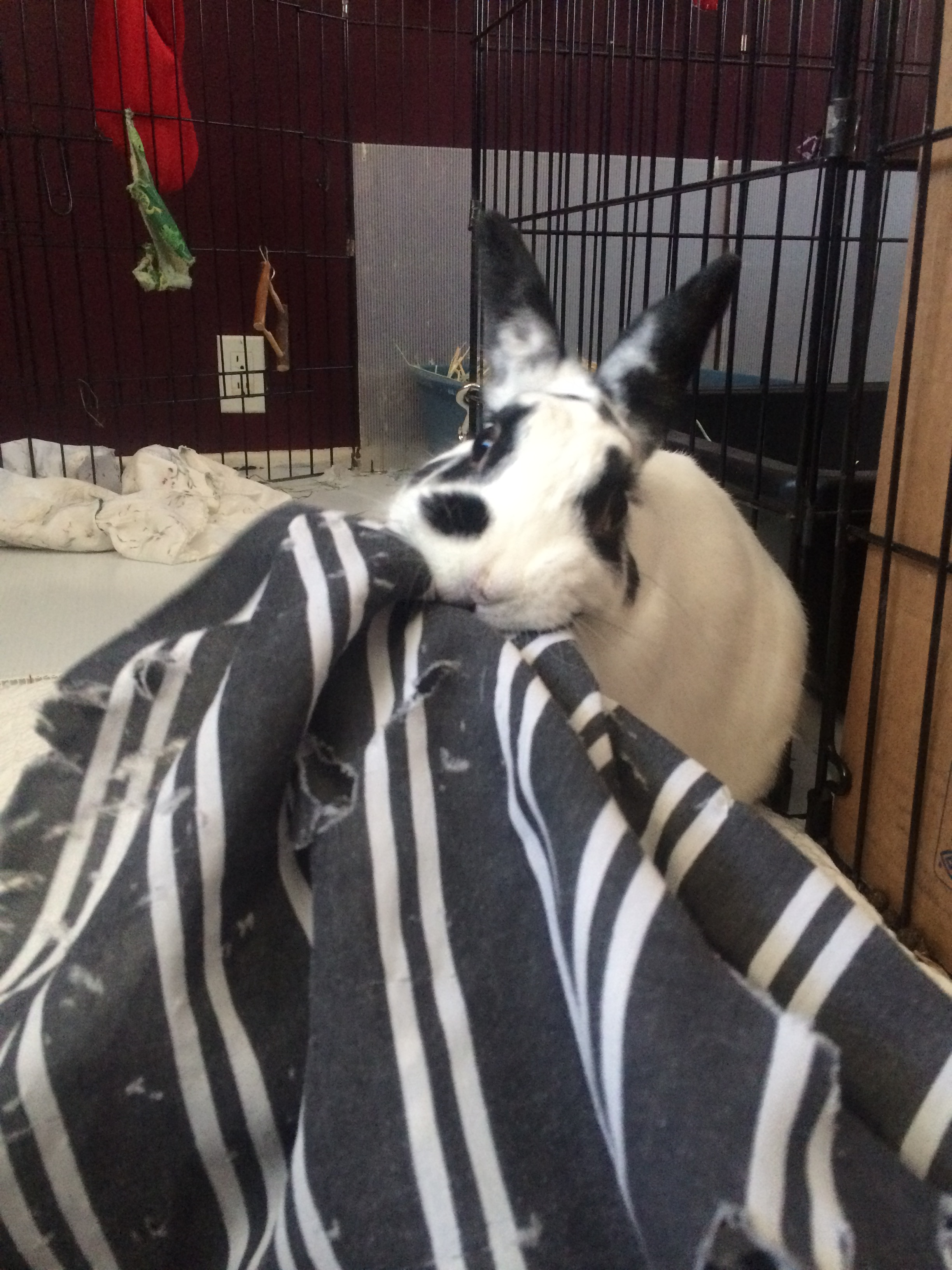 Oooh! What's this?
Oooh! What's this?Bunny-proofing should be thought of as a work in progress, especially if you decide to keep bunnies in your life for many years. You may have everything blocked off and put away, and then one day, you find out that your bunny can squeeze behind your desk and pull out your carpet. If you happen to have a baby bunny, you will need to block off certain things such as underneath a couch or bookshelf (they are so little, they’ll squeeze through anything). Pay attention to where your bunny likes to play and what they like to do. Does your bunny like to jump onto your desk and check out your computer? Is he extraordinarily interested in that corner of your couch? Facebook is full of posts of "bunny-shaming" and people telling tales of the most expensive things their bunnies have destroyed (I think the $30,000 Persian rug was on the top on that list). Even seniors like to nibble on the occasional forbidden item.
Important!
Anything of significant value, whether sentimental or monetary, should be kept well away from the rabbits. If your heart hurts at the thought of your very nice (or new) furniture trashed, I would either restrict the bunny from that room, move the furniture to a section of the house the bunny is not allowed or perhaps think of a different kind of pet.
This is not a criticism to anyone who likes nice things, but rather a check to see what you are willing to handle. For some people, the thought of bunny-proofing to protect the furniture, electronics, artwork and other valuable things is too much work. For others, if the bunny rips up that old leather sectional, it will give them an excuse to get rid of it. What is important to you?
Gates may be useful (like the ones used for babies or dogs - do NOT get wooden gates). When purchasing, keep in mind that bunnies can jump. I would recommend that your gate should be at least 36" (3ft/~1m) high. However, if your bunny is older or disabled, a shorter gate will probably be OK. Be aware that the bars on most gates are wide enough for small bunnies to walk through without too much effort. Securing a mesh or hardware cloth against the bars may also be necessary (don't forget the pressure mounts, especially if you have extensions to fit the gate in your doorway).
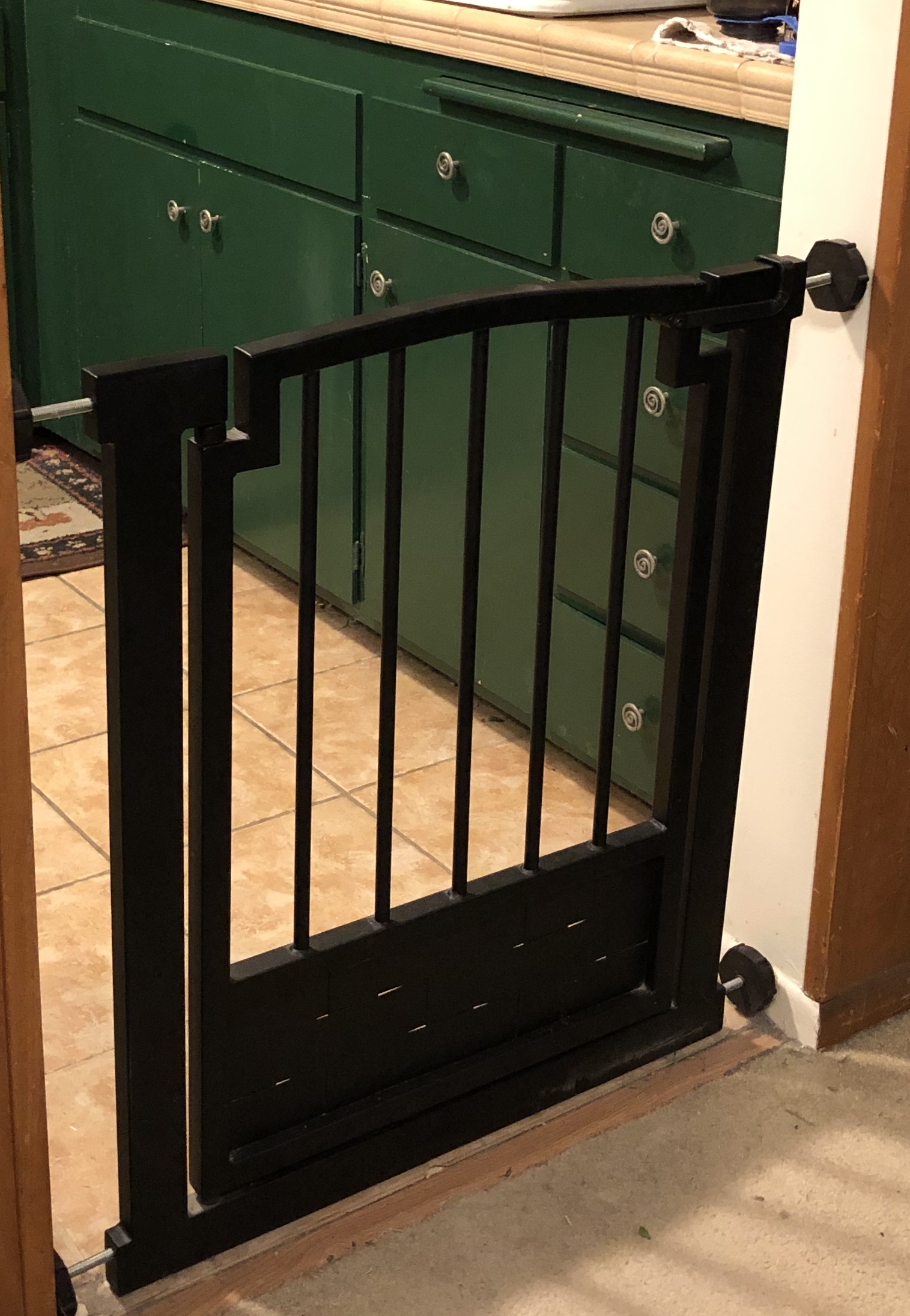 3ft high metal gate. 3ft high metal gate. |
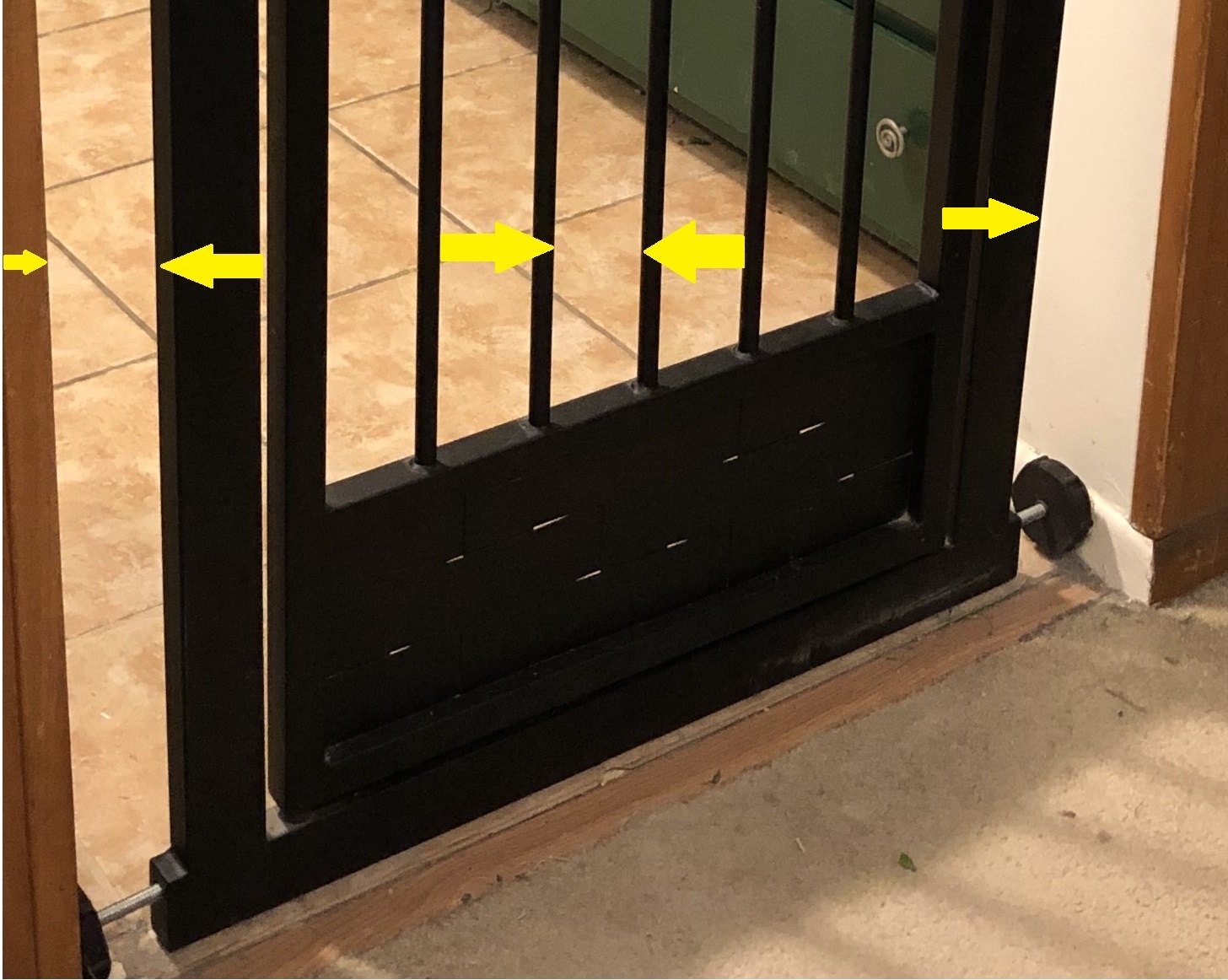 Gates are designed with babies and dogs in mind. Therefore, you need to be aware of places your bunny may jump through and block accordingly. Gates are designed with babies and dogs in mind. Therefore, you need to be aware of places your bunny may jump through and block accordingly. |
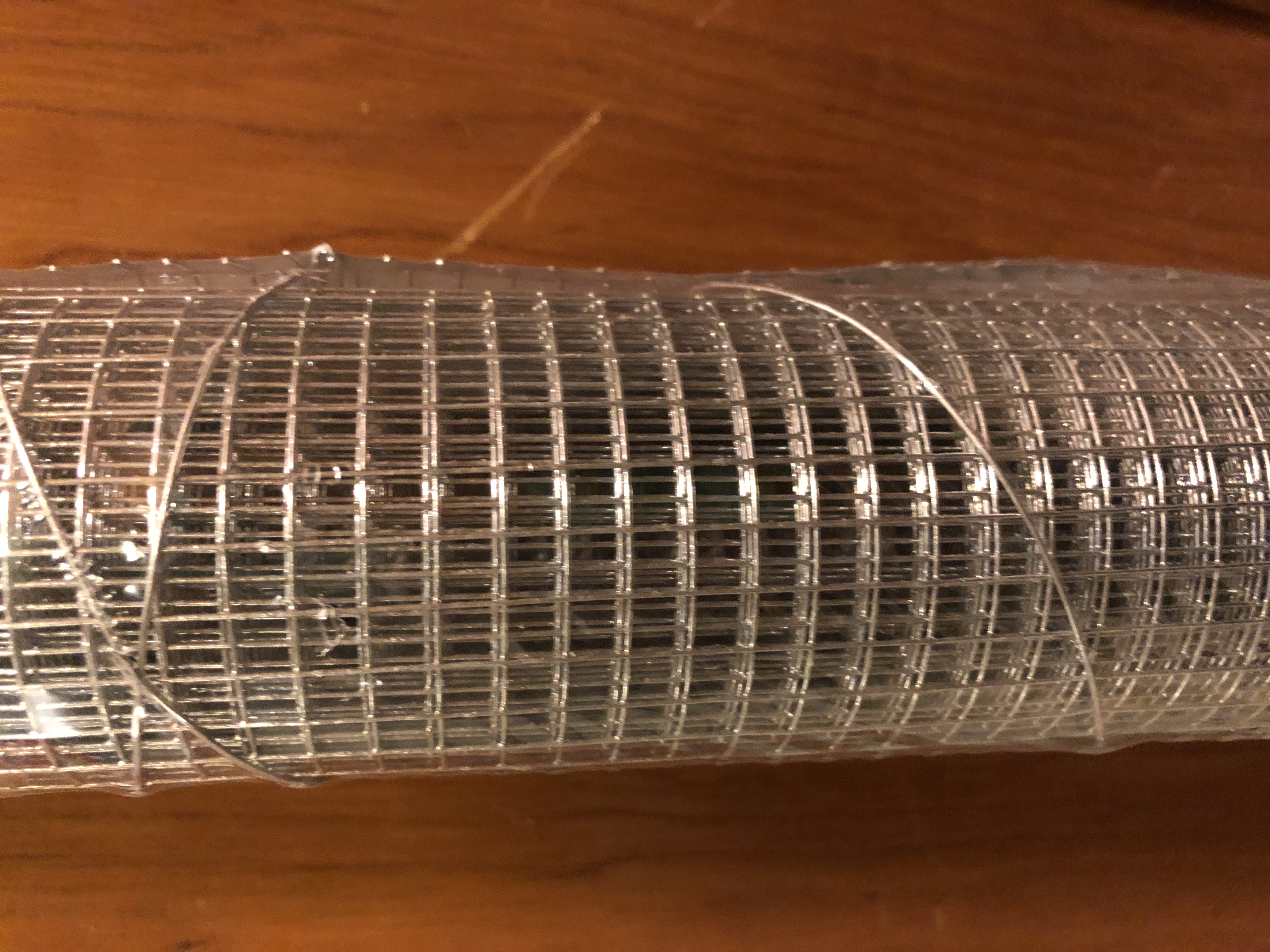 This is galvanized 23 gauge 1/4inch mesh hardware cloth. You can secure this with zip ties (or even staples if securing it against something wooden). It can be used to block gaps in gates or exercise pens. It can be purchased in any hardware store. NOTE: Do NOT buy chicken wire. The spaces are too big and the bunnies can bite through it.
This is galvanized 23 gauge 1/4inch mesh hardware cloth. You can secure this with zip ties (or even staples if securing it against something wooden). It can be used to block gaps in gates or exercise pens. It can be purchased in any hardware store. NOTE: Do NOT buy chicken wire. The spaces are too big and the bunnies can bite through it.You can also use exercise pens (here I like to use short pens to reduce the chance of me tripping over them) to block access to a bookshelf, doorway or another part of a room. I like to use pens if I'm letting a bunny out to exercise, but want to keep him away from a part of the room. Plastic storage containers can protect your belongings, and if stored under the bed or shelf, block access.
An untreated 2x4 piece of wood can be placed in front of baseboards to protect them. Make sure the wood is untreated and unpainted.
Plexiglass can be used to protect the wall and floor boards (plexiglass can be relatively expensive, but looks more attractive than placing cardboard against the wall).
Placing loose tiles in a corner can protect your carpet from being pulled up and can also provide a cool surface for your bunny to lie on during the hot days of summer. Major home improvement centers will sell loose tiles, but sometimes you can go to an independent flooring store and ask them very nicely if they have a loose tile or two they could spare for your bunny. Sometimes the staff will be charmed to search for single or sizable broken pieces to give to you for free.
An old blanket on the couch or piece of cardboard wrapped around the leg of your dining room table may distract your bunny and protect your furniture.
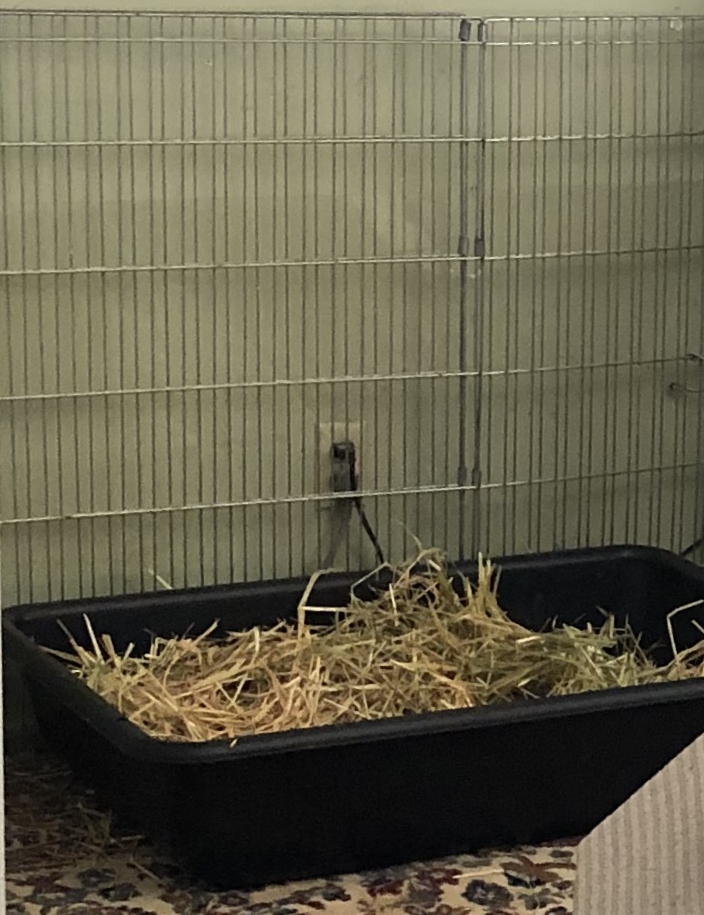 Plexiglass (with an exercise pen in front) protects the wall and the cords. Plexiglass can be purchased online or from anyone who sells plastics or custom acrylics (good for custom sizes). Sometimes they can also be found in hardware stores. Plexiglass (with an exercise pen in front) protects the wall and the cords. Plexiglass can be purchased online or from anyone who sells plastics or custom acrylics (good for custom sizes). Sometimes they can also be found in hardware stores. |
Important: Just a word of advice regarding fibers, such as carpet, towels, sheets and blankets. Lots of bunnies like to chew fabric or pull up carpet. Most bunnies will just rip it and toss the pieces aside. Do not let your bunny eat fabric, as this can cause blockage in the digestive system, which is very serious and can become fatal if not addressed quickly. Also, magazines and phone books are fine for the bunny to shred, as long as they do not eat the paper. If they eat a small piece or two, that is OK, but don’t let them consume the whole phone book.
Distract Them!
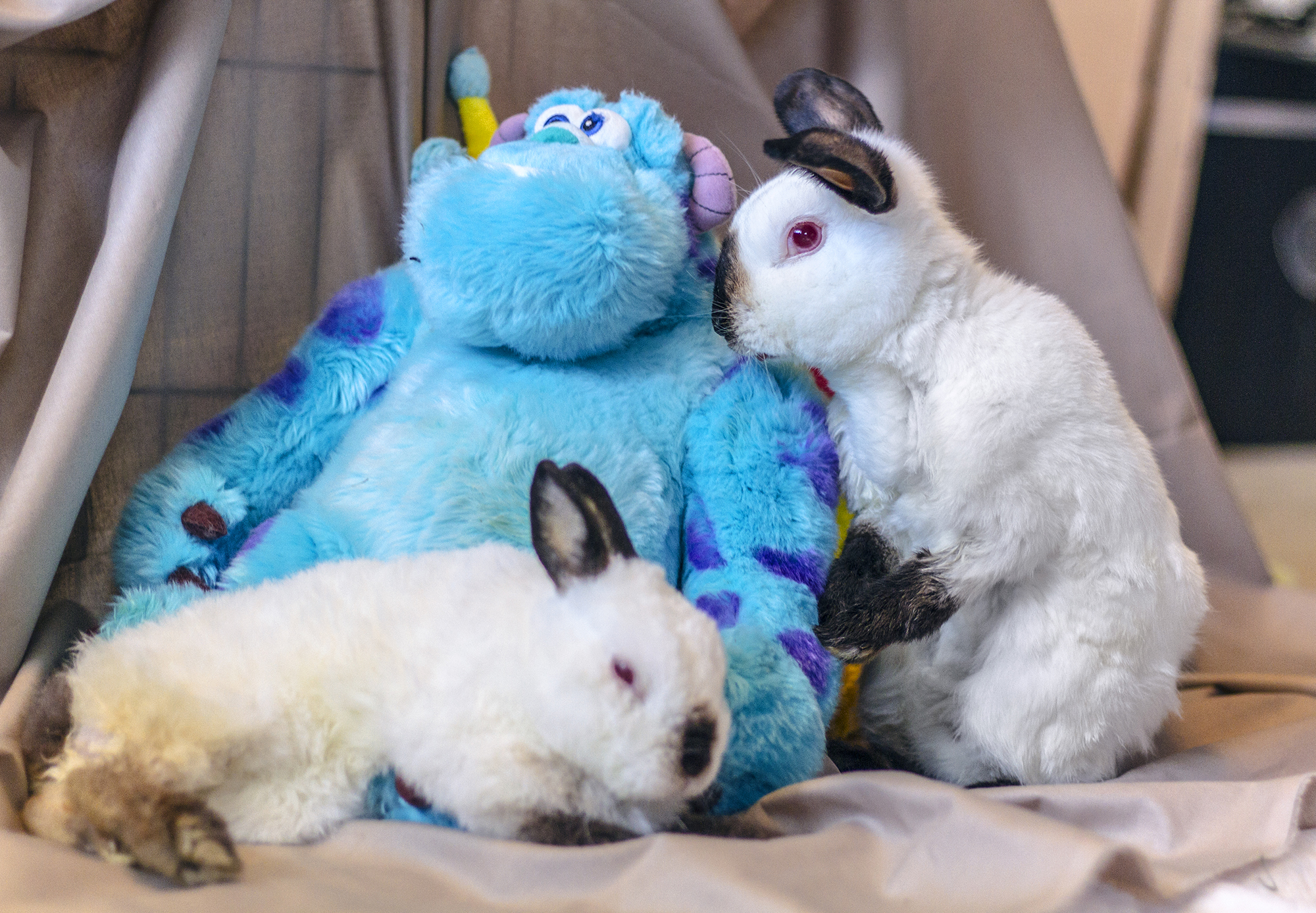 Slimmy thinks he can take Sully.
Slimmy thinks he can take Sully.Photo by Dustin Yoder.
Part of bunny-proofing requires that you also give bunnies toys to entertain them and (hopefully) keep them out of trouble. That means lots of cardboard for them to chew on, paper to shred (magazines and old phone books are fun for them), wooden toys, tunnels, grass mats, even balls to toss around (usually into the water bowl). Old towels, sheets, clean rags or clothing can be put in a box, and the bunnies can have a fun time digging and reorganizing. You can purchase appropriate toys from various retailers, but I’ve found the biggest crowd pleasers are the DIY ones. You can never go wrong with a cardboard box or with toilet paper rolls.
Observe what your bunny likes to do and tailor an appropriate toy to entertain them. The right toy will preoccupy them for hours.
